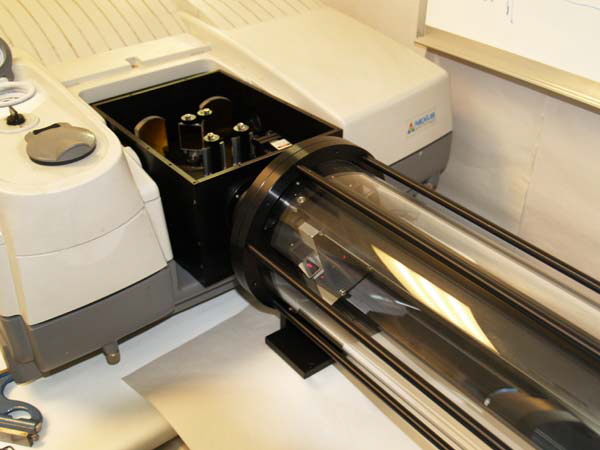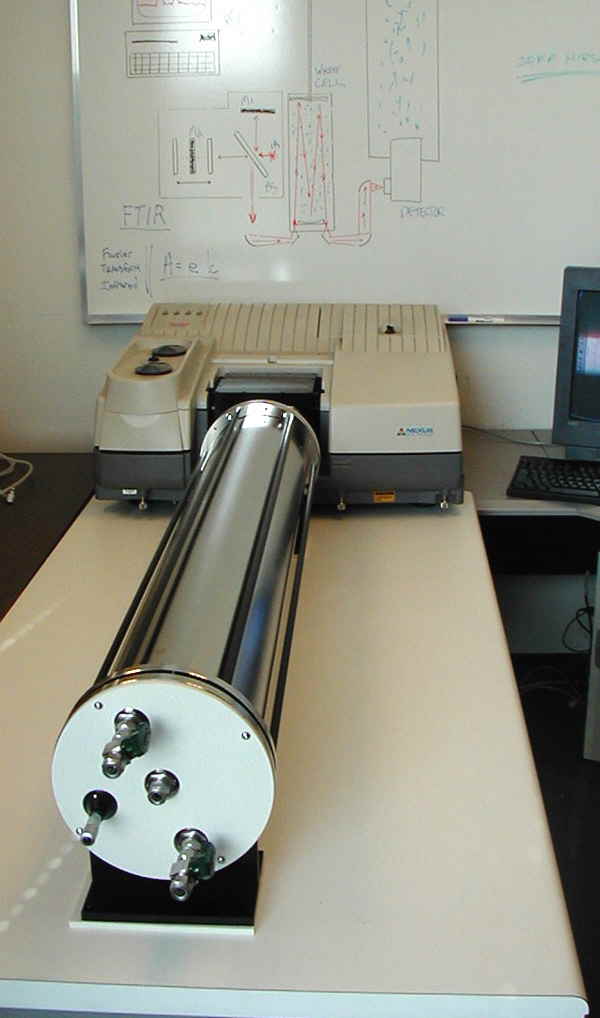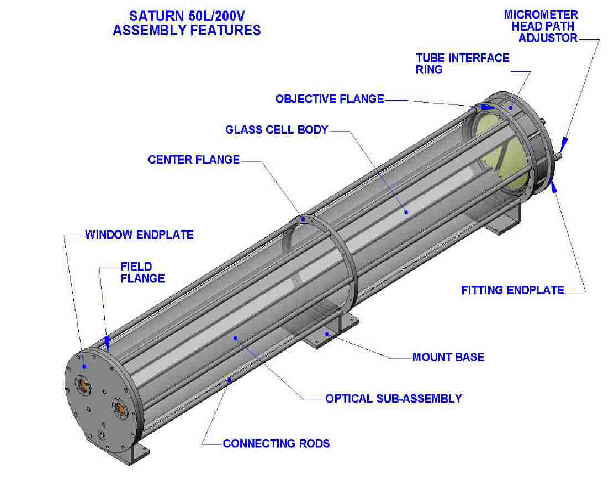|
|
|||||||||||||||||||||||||||||||||||||
|
20 - 200 Meter, 50 Liter Multi-Pass Gas Cell This gas cell replaces the 100 meter cell where volume is not critical and signal to noise and detection levels are most important. (The 100 meter cell with a volume of 25 liters is still available at a price of $20,200.00. It has a smaller volume and provides excellent performance at 100 meters pathlength.) This 200 meter gas cell has a larger volume associated with a longer base path then the 80 meter and 100 meter gas cells and larger diameter mirrors. This results in our highest performance and longest pathlength gas cell. (We have built longer path gas cells with larger mirrors for custom applications.) The trade-off on this 200 meters gas cell is volume. The mirrors are larger to collect a larger solid angle to maximize energy throughput for this very long pathlength gas cell. It has a micrometer barrel adjustment that allows for easy, reproducible pathlength adjustment. The cell body is Borosilicate glass (Pyrex) and end plates are metal. This gas cell can be purchased with a more rugged and safer aluminum body construction. The gas cells may be installed in a sample compartment or an external beam of a laboratory FTIR spectrometer.
Above the 200 meter cell with a glass body
Above with the 200 meter gas cell body made of metal
SAT-50L/200V Saturn Series Long Path Gas Absorption Cell for FTIR gas analysis. Mounting fixture and transfer optics for center-focus FTIR. Optics mounted on easily removable sub-assemblies. SS valves and fittings with 3/8” Swagelok connections and flow tube. Comes with two 37.5mm x 4mm KBr windows as standard. $26,400. USD
Pathlength: Volume: Cell Body: Cell Hardware: Optical Coating: Temperature Range: Pressure Range: 20 to 200 meters, variable Approx.50 liters. Borosilicate glass (pyrex) aluminum black anodized GeminiSilver, protected multilayer Ambient (less than 50 C) vacuum-ambient
200 Meter Variable pathlength Gas Cell Specifications and Advantages
1. Physical Size – about 1.6 meters long and 250 mm wide 2. Base path (distance between objective and field mirrors – 1.35 meters 3. Outside diameter of the glass cell body – 225 mm 4. Transfer optics fit most all FTIR spectrometer sample compartments 5. Cell can be heated to 100 degrees Celsius.
Design consideration:
This gas cell is the latest design in very long path cells. It is optimized for limit of detection performance. A 10 meter 2 liter gas cell has excellent energy throughput performance (high signal and low noise). In going to a 100 meter gas cell, one would expect that the limit of detection would go down by a factor of 10. That would be true if IR energy loses and resultant noise did not cancel out some of the advantage of the increased absorbance signal associated with the longer pathlength.
Design Features and advantages:
1. Gas cell f # is matched throughout the full optical system. The system includes the transfer optics and gas cell. This insures that IR beam energy is not lost to overfilling the mirrors or cut off by over filling the input output window ports. 2. The image size from the transfer optics is matched to the input window size of the gas cell thereby eliminating energy lost going into the gas cell. 3. The image size at the objective lens (out of focus image) is matched to just fill the objective mirror and therefore collect all the energy passing into the gas cell and being reflected back from the field lens. 4. The in focus image focus and size has been carefully matched so that the image quality reflected back and forth in the gas cell has been carefully preserved throughout all the reflections to minimize off axis scattering, making sure that energy is not lost by over filling objective mirrors, and minimizing the propagation of focus errors throughout the multiple reflection process. 5. The mirror coatings have been improved to increase mirror reflection efficiency to minimize reflection loses. 6. The new silver coating on the mirrors allows one to easily see the red laser spots on the field mirror during the alignment process where one can adjust the pathlength over the range of 20 to 200 meters. 7. Shorter pathlength has fewer reflections, less noise and higher signal to noise ratios. 8. Two pairs of retro-reflectors are using in the cell to produce effective corner cube long optical paths alignment and stability. The two retro-reflectors produce thermal optical stability, long path optical accuracy, and reproducibility of alignment even when there are thermal variations. This is important when with a gas cell produces a pathlength of 200 meters. 9. The gas cell has been designed for excellent thermal stability with special consideration to the whole system, which includes the transfer optics, metal support of the cell body, optical stability over a temperature range from ambient to 100 degrees Celsius. 10. There are no epoxies used in the gas cell allowing the gas cell to be heated in theory to above 100 degrees Celsius. (Note: the temperature range of the cell is ambient to 100 C).
Call 603 886-5555 or email: afuller@ftir.com
|
||||||||||


